Key Concepts
PlayMakers is not currently released for productive usage. The material below is a preview reference.
Please contact us to get started.
This section will cover the key concepts and define the terms used throughout the whole documentation.
UGC
If you are not familiar with the concept of UGC (User-Generated content), we invite you to read through the user-generated definition of UGC on Wikipedia.
In a few words, the rise of social media suddenly allowed anyone to share content with the whole world, and said content, in whatever form this can be, is what we call UGC. Given a topic, like a video game, a lot of value can often be found in this pool of ideas, assets or others, and a common challenge is to harvest what's of interest, sort the wheat from the chaff and integrate it back into the product.
Project
The project is the center of attention. This is what users consume, what creators want to contribute to and what studios wish to grow.
This could be a video game, a webnovel, a webtoon, an online museum or any collaborative effort.
Users
In the whole flow, different types of users have very different roles and functions.
Consumers/Players
Most users are simply consumers of the product/content. In the case of a game, we would call them players. We could assimilate them as a purely passive mass, but a big portion of this mass can still contribute, if we give them the opportunity to express themselves through one-click interactions, like a voting mechanism.
They will interface with the PlayMakers world either within the product itself or through the Makers Hub.
Creators/Authors (Makers)
A consumer can also be a creator. They become more active and start contributing with more important pieces, they actually spent time working on content. Among our tasks are attracting them, educating them, and keeping them.
The will interact with the PlayMakers universe either within the product itself or through the dedicated sections of the Makers Hub.
Project Owners/Studios
The project owner is at the origin of the project/game. This might be a company, a team, a single person, or even a decentralized entity (making it then 100% UGC). They set the goals, the limits, the conditions: they can keep the full control over their product if they wish it so.
A special Studio Dashboard is available for them to set things up and monitor them.
Moderators
Anyone can have the role of a moderator. This is not a mandatory role in the PlayMakers flow. They can censor content that could have slipped through the automated filters, mediate litigation in claims of intellectual properties or manually have the final say on the approval of implementation.
Their control panel is available within the Studio Dashboard.
Components
Client side (Front)
Studio Dashboard
The web interface to:
- Create a new project
- Create contribution schemas
- Browse open submissions
- Browse analytics
- Download submissions if no wish to do it automatically
Join our beloved Studio Dashboard!
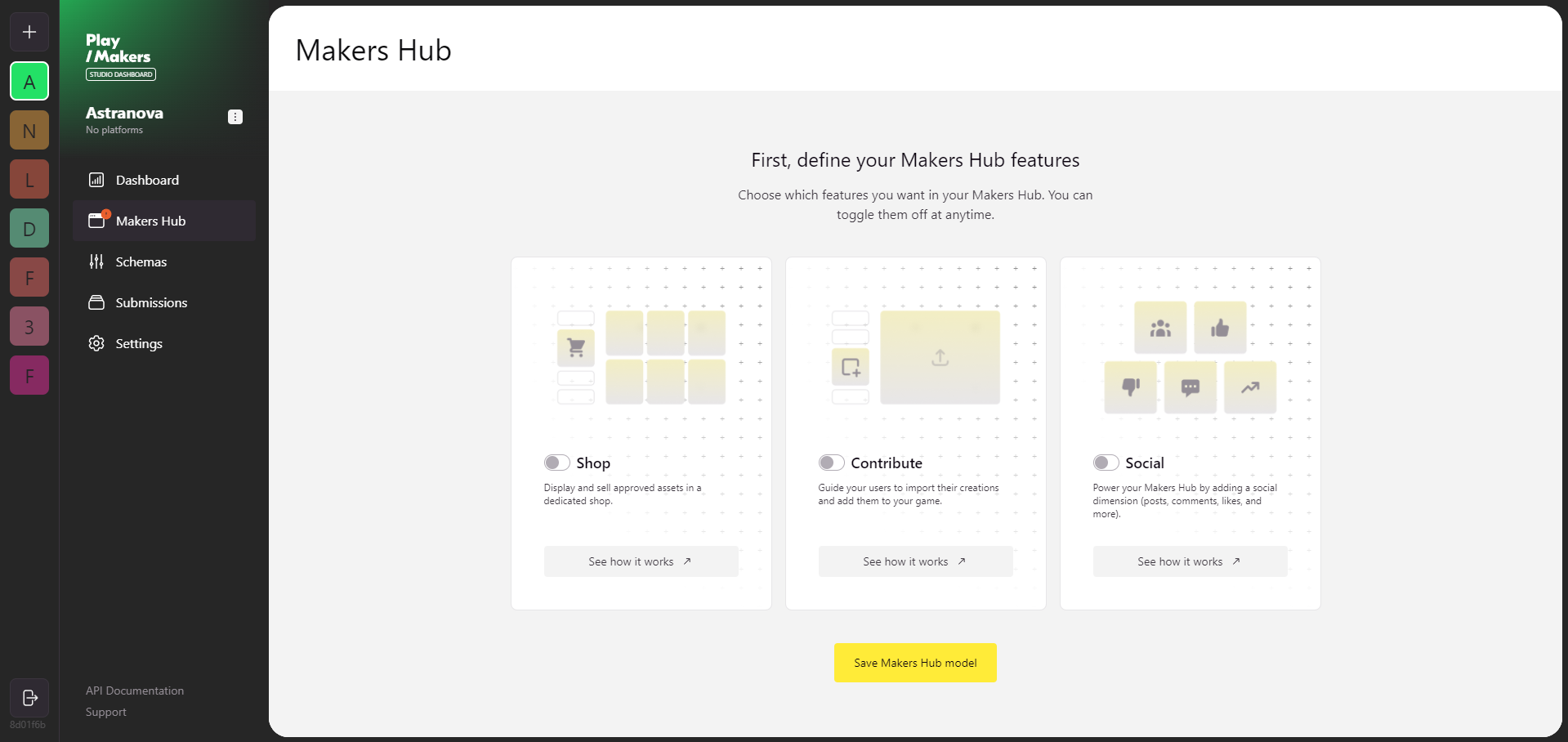
Makers Hub
This interface can either be:
- Hosted for you by PlayMakers as a standalone website
- Hosted for you by PlayMakers and integrated within your product
- Integrated directly within your product using some of our templates
- Fully customized in your solution with the help of our SDKs (Node, Unity, and more)
Social feed
It is there to:
- Let the consumers discover UGC
- Let the consumers comment each others’ posts
- Expose submissions to vote
- Engage the community
- .. or any feature of your liking
Enable/disable social feed
You can enable or disable Makers Hub's social feature from Studio Dashboard:
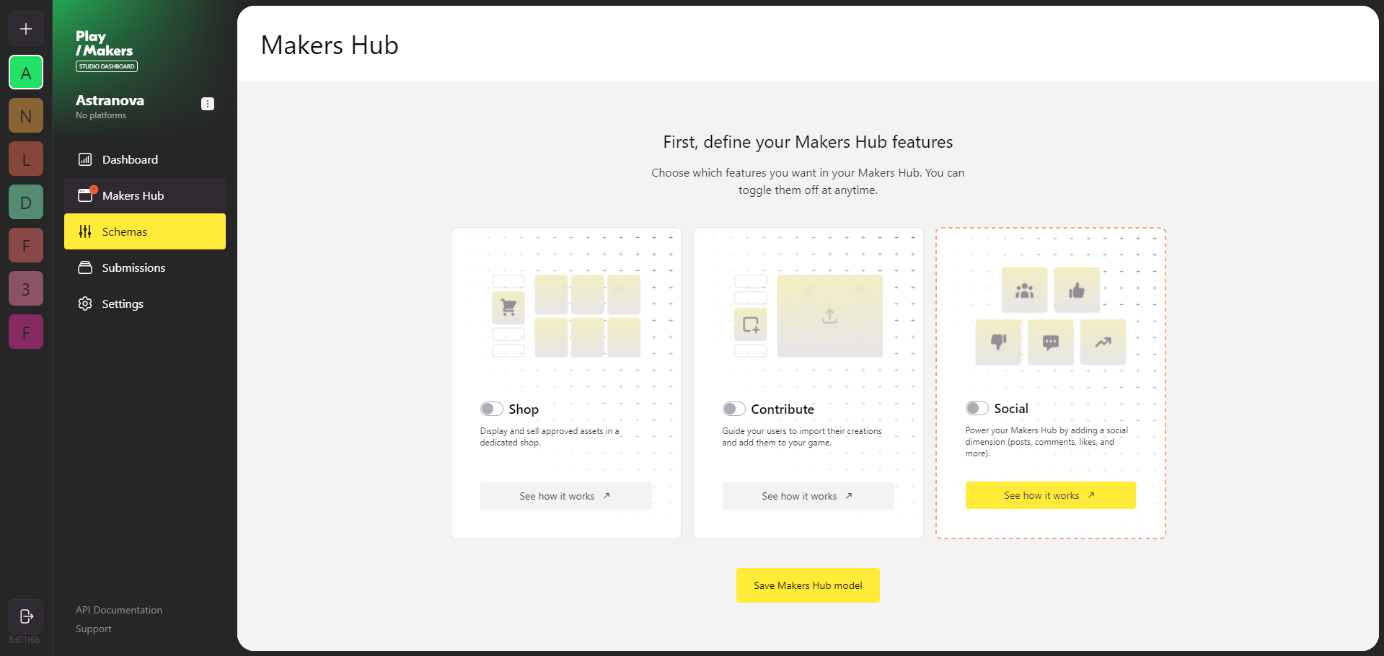
If you click on the button "See how it works", you can watch a video showing you what the social feature looks like on Makers Hub:

Submission interface
It is there to:
- Provide tutorial and documentation
- Implement an upload screen for the creators
- Manage the submissions from their authors' perspective
- .. or any feature of your liking
Our submission interface offers the creator two options:
- fill in a form with different blocks, each corresponding to parts of the overall submission
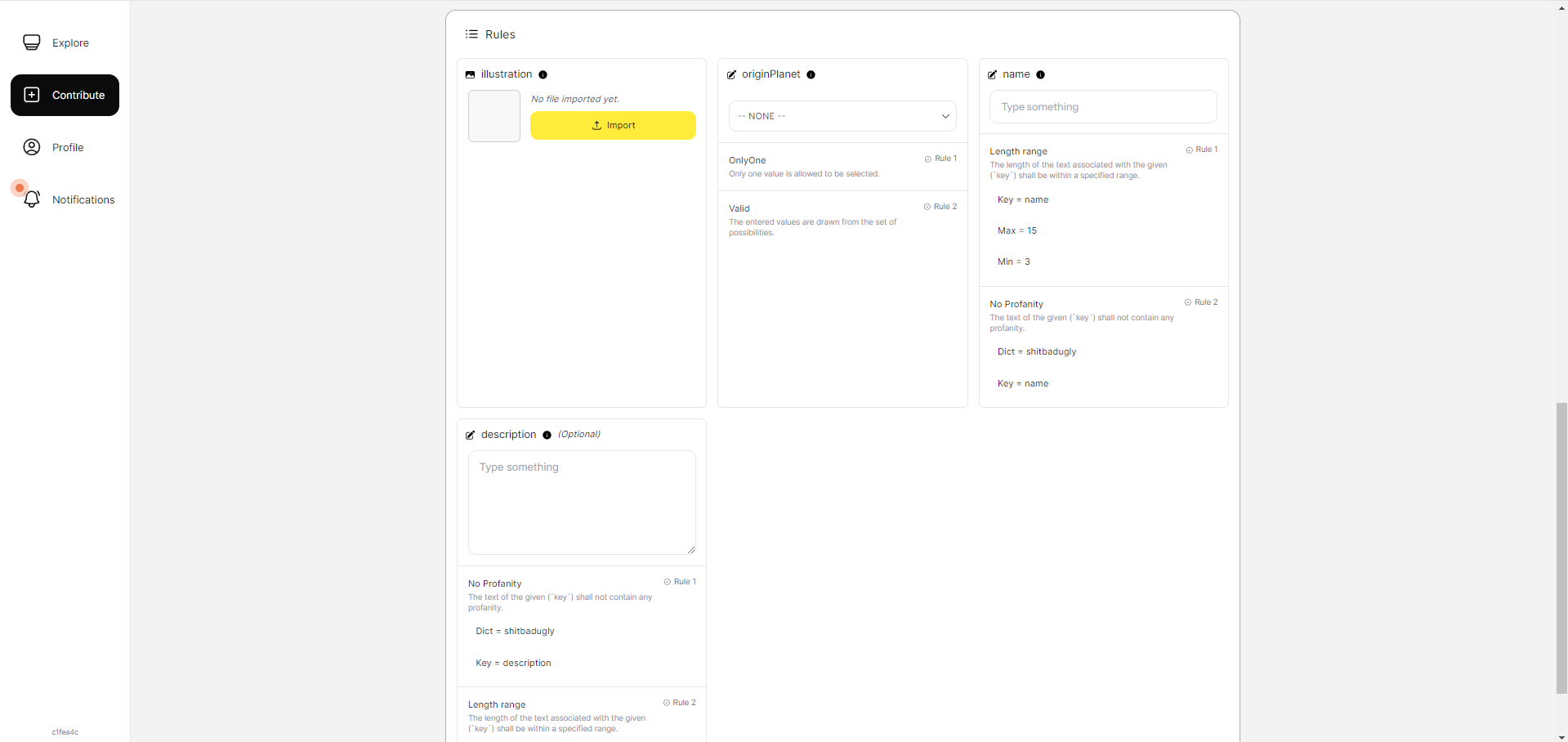
- An alternative to what precedes, the possibility to import a zip archive containing the required files:
- a json-formated submission listing all the inputs
- the assets which paths are present in the submission
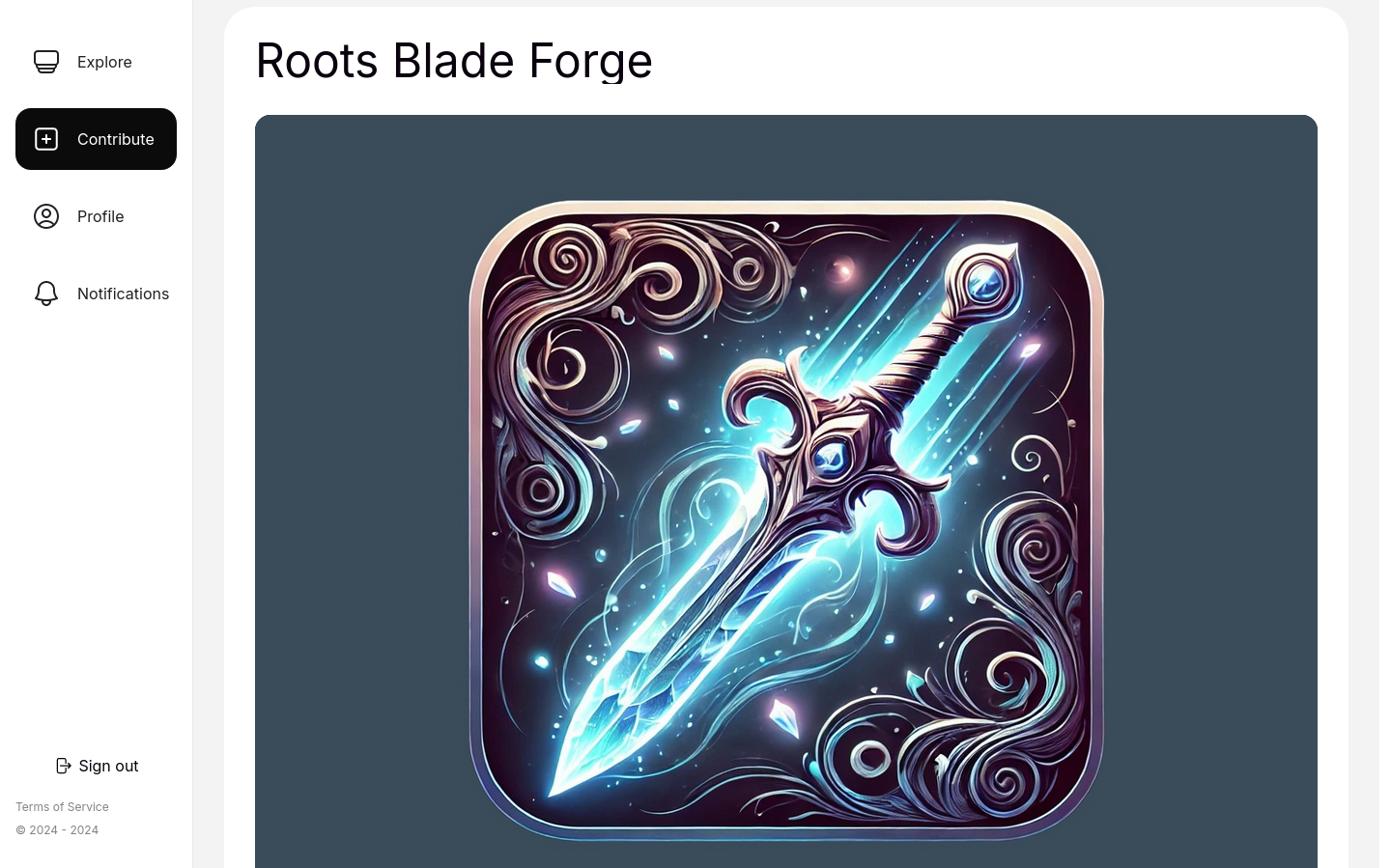
You have the possibility to download these ressources after PlayMakers's technology validates your submission and reuse them later, as a zip archive to upload on the submission interface or as anoter basis to work on later for example.
Server side (Back)
Barista
An expert barista will transform a sack of coffee beans into an exquisite beverage. A key step of the process is filtering. Barista is the in-house we use to validate submissions against contribution schemas. It goes even beyond, in proposing automated corrections when possible.
Yes, PlayMakers makes coffee ☕.
IP Management
Our Content and Marks are protected by various intellectual property rights and unfair competition laws. We grant you a non-exclusive, non-transferable, revocable licence to access the Services, and download or print a copy of any portion of the Content to which you have properly gained access, solely for your personal and non-commercial use.
To make any use of the Services, Content, or Marks, please address your request to contact@playmakers.co. If permission is granted, we must be mentioned as the owners of the content, and the latter must contain a copyright or proprietary notice upon posting.
If you send us any question, comment, suggestion, idea, feedback, or other information about the Services ('Submissions'), you agree to assign to us all intellectual property rights in such Submission.
You are solely responsible for your Submissions (prohibited activities,...) and you expressly agree to reimburse us for any and all losses that we may suffer because of your breach of this section, any third party’s intellectual property rights, or applicable law.
Rewarding system
PlayMakers can charge the users buying the creator's content with an invoice, using the studio's preferred currency. Then, we send that money to the latter. We can use the blockchain to do so if you wish it.
A studio can choose several options to reward a creator:
- by sharing a part of their revenue generated by the creator's content. It is possible to directly transfer their earnings to their bank account, bypassing the need to store the money in a digital wallet.
- by providing them with in-game assets (skins, in-game currency,...)
More on the rewards soon.
Submission flow
Contribution Schema
A studio can identify elements/blocks within the project where UGC can easily be integrated. For one of those elements, the specification, as abstract as possible, defining the strict requirements for a submission to be deemed valid, is what we call the contribution schema or Schema for short.
Developers among the readers might make the analogy with XSD (the schema language for XML) or OAS (a specification format for APIs).
Technically, a Schema is a tree of rules to validate submissions.
Let the creators run wild in a controlled environment!
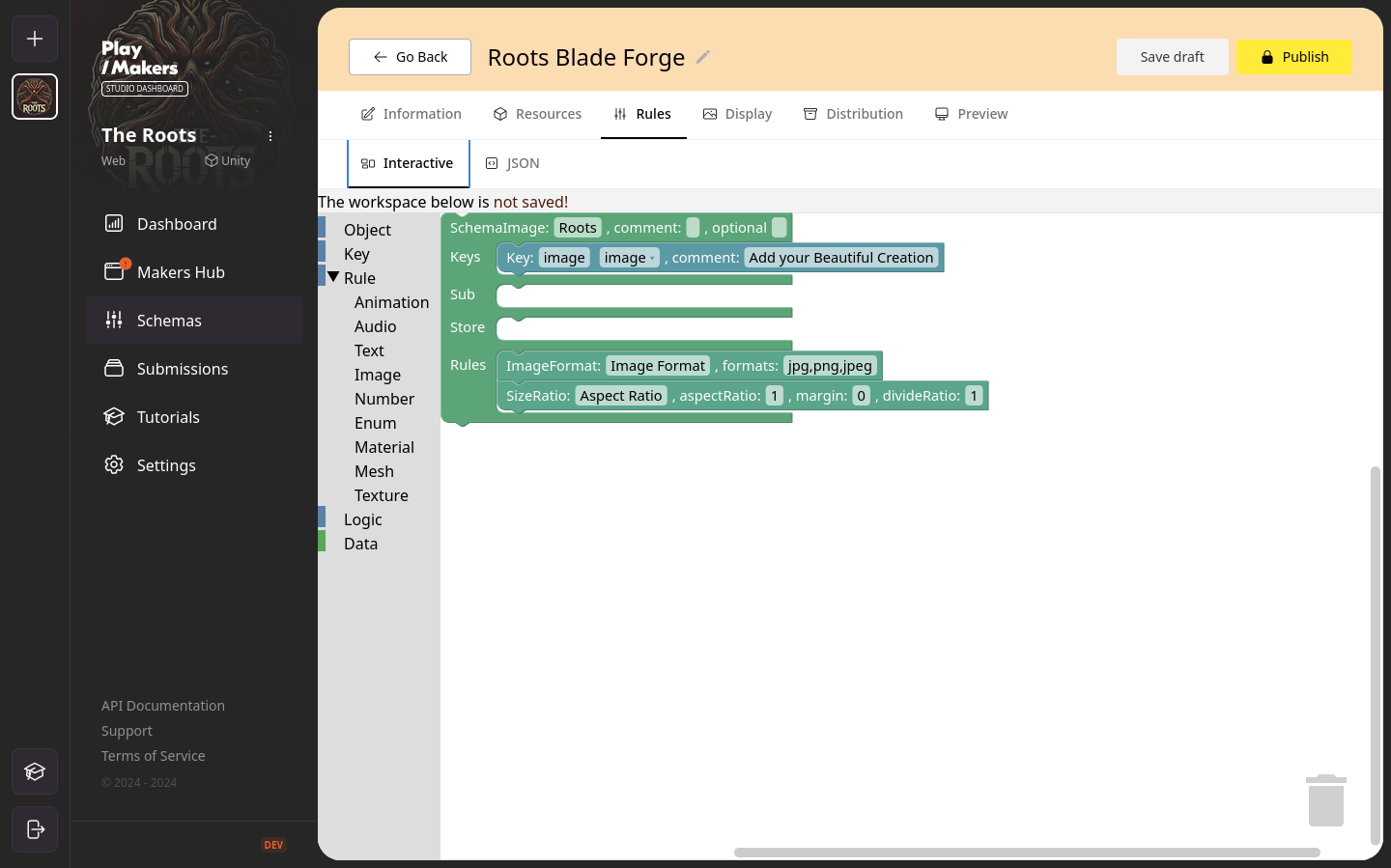
Rule
A rule is a criterion a submission, or part of it, needs to fulfill to be considered valid. Some rules are elementary, while others can be an aggregated set of other rules or some very specific and complex calculations. They are structured within a tree to form a schema.
To give a few examples:
- A rule to check that a given image is exactly of size
512x512 - A rule to check that an audio sample has an average BPM (beat per minute) between 75 and 85
- A rule to ban words from a natural language paragraph
- A rule to ensure that a 3D model (mesh+skeleton) has the required axis to steer rotating wheels
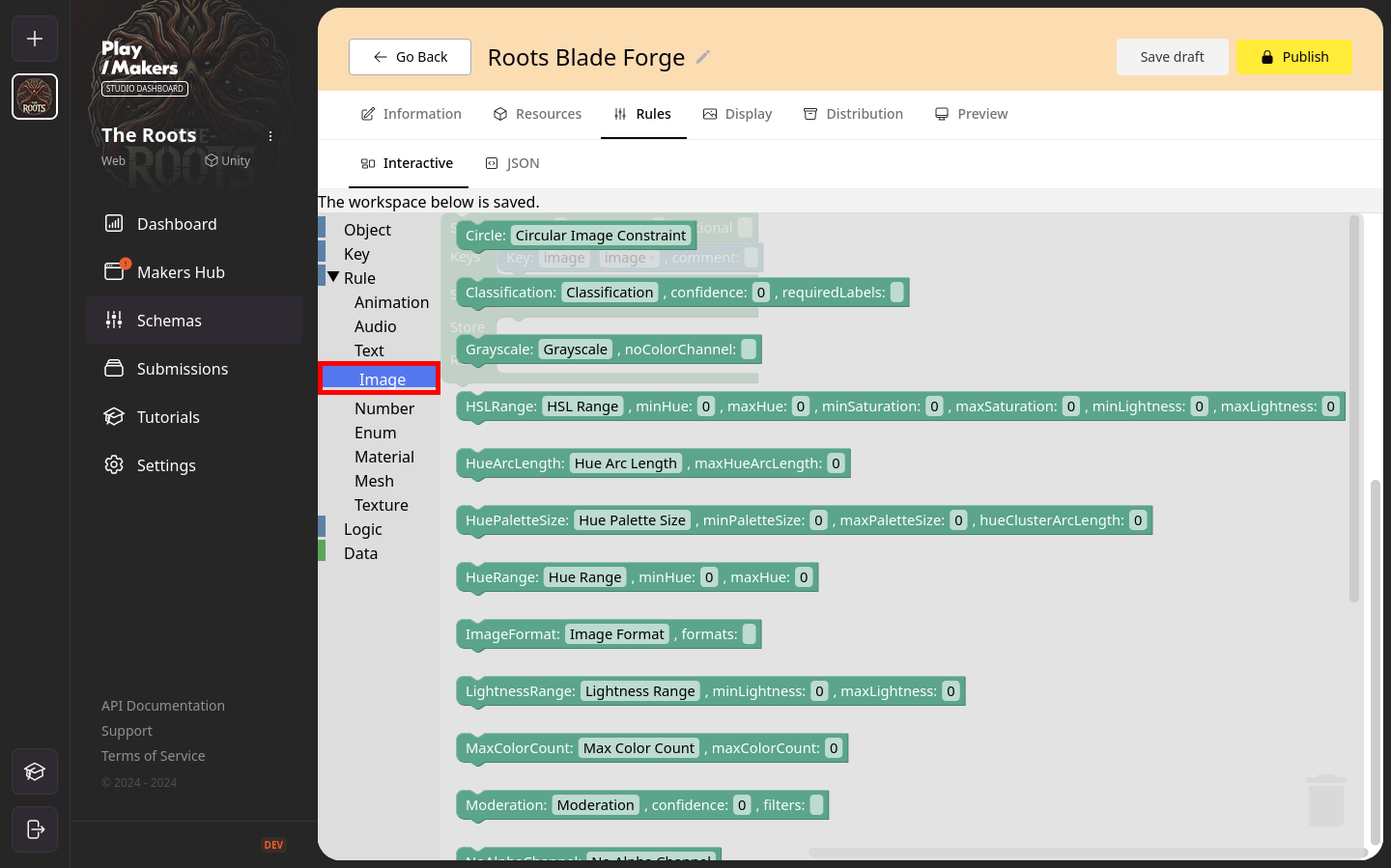
We are continuously building new rules. Currently available rules are documented in the relevant section.
You can directly access the documentation by clicking on the aforementioned section at the bottom-left of Studio Dashboard's website, highlighted in yellow only by way of an illustration.
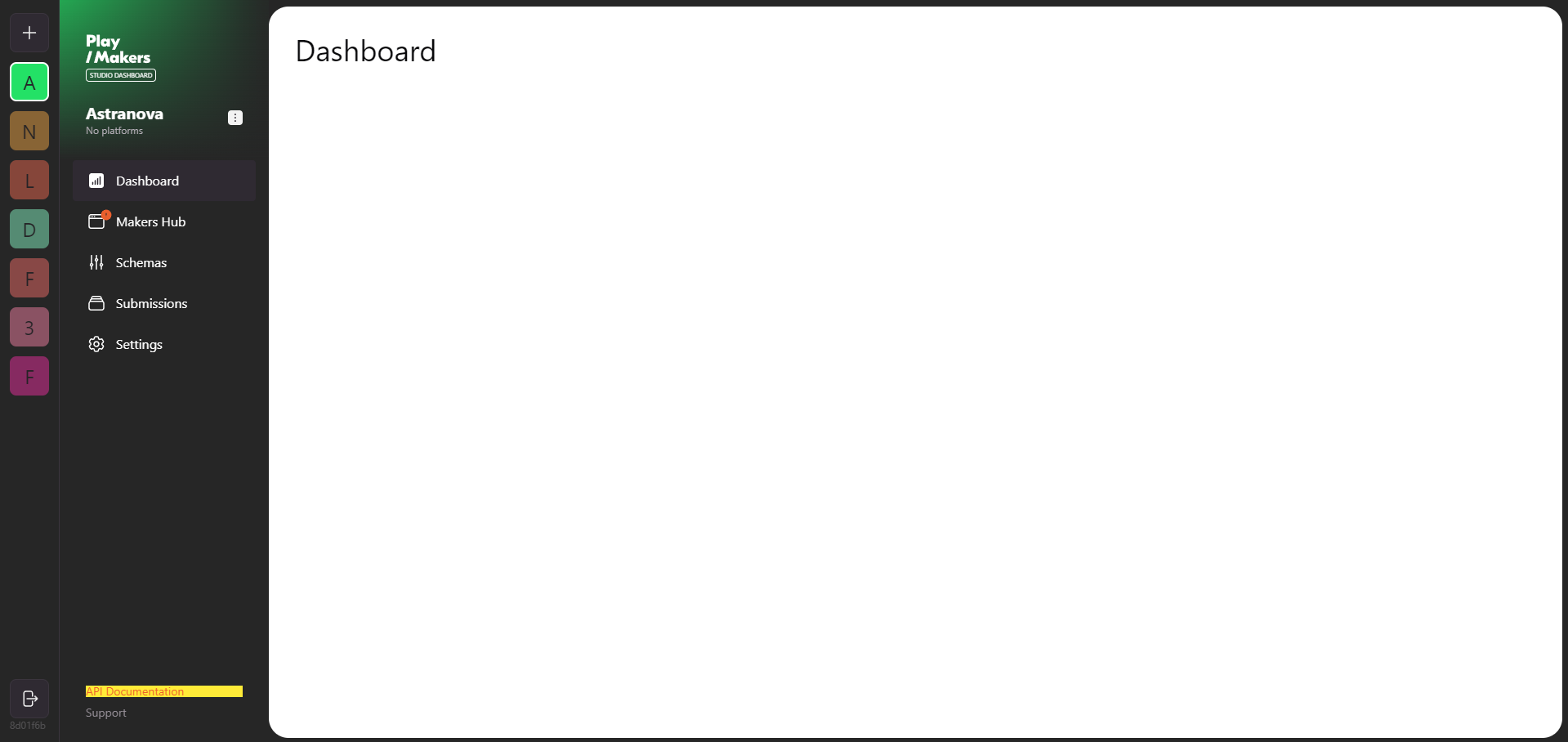
Submission
A creator's content is a submission. It can go through a multitude of states, described in the submission flow, from draft to implemented contribution.
Vote
Voting is not only an efficient way to filter submissions, this is also a manner to empower the consumers and thus involve and engage the community further.
Currently, voting can have a power of +1 or -1.
In a future release, the scope will be widened with the introduction of badges, obtained by individuals achieving a variety of feats, modulating the voting weight, depending on the type of submission.
Reward
PlayMakers offers you the possibility to reward your (top) creators through your moderation dashboard. You can consider several options to do so and, why not, apply some of them at the same time:
- Bounties
- Royalties
- In-game rewards
In the case you choose to financially reward your creators, you can apply the revenue sharing that suits you best. But don't forget that be it this way of rewarding or any other, the offer should also be advantageous to the creators so that they do not think that taking part in the creation process is not worth it.
Visit our page to learn more about selling in-game-user-generated content.